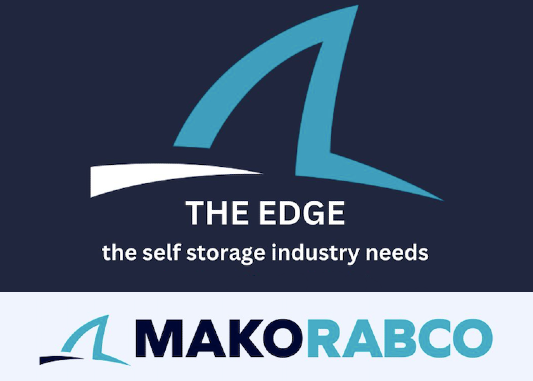Who's Who In Self-Storage: R. Christian Sonne, Newmark
As an avid boater, and a former self-storage facility owner, R. Christian Sonne, CRE, MAI, FRICS, executive vice president and specialty practice co-leader – Self-Storage of Irvine, Calif.-based Newmark, likes to call self-storage a “safe harbor investment.”
 Relative to real estate, safe harbor investments are considered low-risk investments because they are generally protected from significant declines in value, which makes them an ideal option for investors who are looking to preserve capital. Based solely on that definition, Sonne’s claim that self-storage is a safe harbor investment is substantiated. However, he points to the sector’s performance history to provide supporting evidence.
Relative to real estate, safe harbor investments are considered low-risk investments because they are generally protected from significant declines in value, which makes them an ideal option for investors who are looking to preserve capital. Based solely on that definition, Sonne’s claim that self-storage is a safe harbor investment is substantiated. However, he points to the sector’s performance history to provide supporting evidence.
Boom And Bust
For starters, like the lighthouse of real estate, self-storage continues to shine, even during turbulent economic waters. “Self-storage has a long history of strong performance in both boom and bust,” says Sonne, who’s been an appraiser for 40 years, focused on self-storage since 1998, and has witnessed its ability to stay afloat no matter the tide level.
Indeed, its recession-resistant nature has attracted many investors to the asset class. And the COVID-19 pandemic only reinforced what The Great Recession revealed to outside investors: Both economic downturns and upturns generate demand for self-storage. During recessions, businesses may need to close or downsize, while individuals may face upheavals with their employment and/or living arrangements. Alternatively, economic growth can prompt people and companies to expand or upgrade. Either way, self-storage is often needed and used temporarily or long term to accommodate their space limitations.
“What a surprise during the pandemic, self-storage demand fundamentally increased as dining rooms became home offices or classrooms,” says Sonne. “While there have been some corrections, demand fundamentally increased as household use changed with so many work-at-home jobs.”
For this reason, self-storage has become one of the most attractive commercial real estate investments. It has also evolved into a core asset class for institutional investors thanks to its unmatched performance and potential for standardization.
As far as returns go, self-storage has been the top performing property type in the Nareit index for three decades with average annual returns of 18.83 percent from 1994 to 2021. What’s more, self-storage’s total returns surpassed 21 percent in 2023, according to Nareit data published in the 2024 Self-Storage Almanac’s Investment Performance by Property Sector and Subsector Table.
To be clear, self-storage has outperformed the office, industrial, retail, residential, diversified, health care, lodging/resorts, mortgage REIT, timber, infrastructure, data centers, and specialty sectors for 30 years. In and of itself, that’s an impressive accomplishment and long reign.
Although some may question whether the industry’s lead will last due to softening rental rates and declining occupancies in 2023 and the beginning of 2024, Sonne buoys his sentiment about the industry with his belief that “2023 was an economic correction, a reversion to the mean.” He also thinks 2024 will be more in line with pre-COVID norms, saying that the industry will be “returning to normal this year and next year.”
Economics 101
 While he calls economics a “dismal science,” Sonne doesn’t ignore its basic principles. “The supply and demand metric still matters,” he says. “It always has. It’s Economics 101.”
While he calls economics a “dismal science,” Sonne doesn’t ignore its basic principles. “The supply and demand metric still matters,” he says. “It always has. It’s Economics 101.”
There has been speculation that higher interest rates and the ongoing shortage of affordable housing across the country are responsible for a dip in demand, but he doesn’t think “it’s that linear,” as there are plenty of other variables to consider in addition to whether people are moving. In other words, dislocation or downsizing are only two of the numerous demand drivers (and they don’t all begin with the letter D).
“There are lots of determinants,” says Sonne. A few examples include length of stay, household budgets, popularity of unit size/type, and location. Here are his insights on each of those:
- Length of stay: “Length of stay has increased since COVID,” Sonne says, which is positive for occupancy rates.
- Household budgets: Even though inflation has eroded Americans’ purchasing power, the monthly self-storage rent tends to be a mere 2.5 percent of a customer’s household budget. On this subject, Sonne remarks that most people spend more money on coffee or bar tabs than storage. Nevertheless, operators must be wary of what people are willing to spend each month to rent a unit. “There’s a ceiling,” he adds about increasing rates. “If it’s too much money, they pay attention.”
- Popularity of unit size/type: Your customer base and location should determine the unit mix. For instance, facilities located near apartment buildings may rent more smaller units to apartment dwellers without ample closet space, whereas a facility situated among businesses may rent more larger units to commercial clients that need to store surplus inventory and/or files. “Another example is climate control,” says Sonne. “It has terrific demand in some markets but not all markets.”
- Location: Obviously, demand and other details vary by market. Continuing with the boating comparison, Sonne, who has homes in both California and Florida, states that the Pacific Ocean is rough and cold, but the water of the Gulf Coast is warm and calm. Though often asked which home he prefers, he points out the pros and cons of each instead of choosing. Similarly, one must weigh the advantages and disadvantages of the market in question before making a self-storage investment.
 “It’s not just the moving/housing market that impacts demand,” he says. “How important is it?” Instead of taking a general or national perspective on demand, Sonne reminds investors to focus on the local trade areas where they are considering developing self-storage. “Two-thirds of customers come from a three-miles radius of the facility,” he says. Therefore, it is imperative to evaluate the supply and demand of a market on a micro level to determine whether the area is undersupplied, oversupplied, or at equilibrium.
“It’s not just the moving/housing market that impacts demand,” he says. “How important is it?” Instead of taking a general or national perspective on demand, Sonne reminds investors to focus on the local trade areas where they are considering developing self-storage. “Two-thirds of customers come from a three-miles radius of the facility,” he says. Therefore, it is imperative to evaluate the supply and demand of a market on a micro level to determine whether the area is undersupplied, oversupplied, or at equilibrium.
Data Analysis
When it comes to determining demand and feasibility, thorough data analysis is of utmost importance. “Self-storage is more complex than people believe,” Sonne says. “Over the last 10 years there have been more institutional investors, so transparency is particularly important. It’s important to look at a lot of data to make good decisions for the future. Look at multiple data points for patterns.”
Not all data is good data, however, and one must consider the source as well as the sample size, data collection methods, and margin for error before relying on the results. Free sources are readily available on the internet, but Sonne says that the data they present is “not gospel.” Within the self-storage industry, there are several reputable, established data providers that have been employed for countless successful investments.
 To get a comprehensive assessment, Sonne looks at “as many [data points] as I can.” Just like watching multiple news channels to take in various angles and assemble a more complete account, he advises investors to do the same before making (or rejecting) an investment. “Before I go on my boat, I check the weather, the condition of my boat, the temperature, if it has been a historically good time to take a vacation, etc., to determine whether it’s safe to take the trip,” he says. Investing in self-storage requires that same level of preparatory diligence. Otherwise, you could end up sailing in rough seas.
To get a comprehensive assessment, Sonne looks at “as many [data points] as I can.” Just like watching multiple news channels to take in various angles and assemble a more complete account, he advises investors to do the same before making (or rejecting) an investment. “Before I go on my boat, I check the weather, the condition of my boat, the temperature, if it has been a historically good time to take a vacation, etc., to determine whether it’s safe to take the trip,” he says. Investing in self-storage requires that same level of preparatory diligence. Otherwise, you could end up sailing in rough seas.
–
Erica Shatzer is the editor of Modern Storage Media.
More Content
Popular Posts
The self storage industry is in a precarious...
Like its name implies, Surprise, Ariz., a...
Joe Shoen, CEO of U-Haul, has had enough.
Joe Shoen has had enough.
In a record-breaking deal finalized May 12,...
Senate Bill 709 (SB709) has many in the...
Donald Trump has just reclaimed the White...
Self-storage operators wear a lot of hats....
The question of “abandonment” of stored...
In 1992, Clinton strategist James Carville...
Recent Posts
When Neville Kennard left for a work trip to...
Self-storage software is no longer...
The self-storage industry continues to...
Fires in California. Tornadoes in Kansas....
From policy pivots in Ottawa to tariff...
Self-storage operators have struggled to...
Their signature red coats may draw attention...
Nailing down Josh and Melissa Huff for an...





















